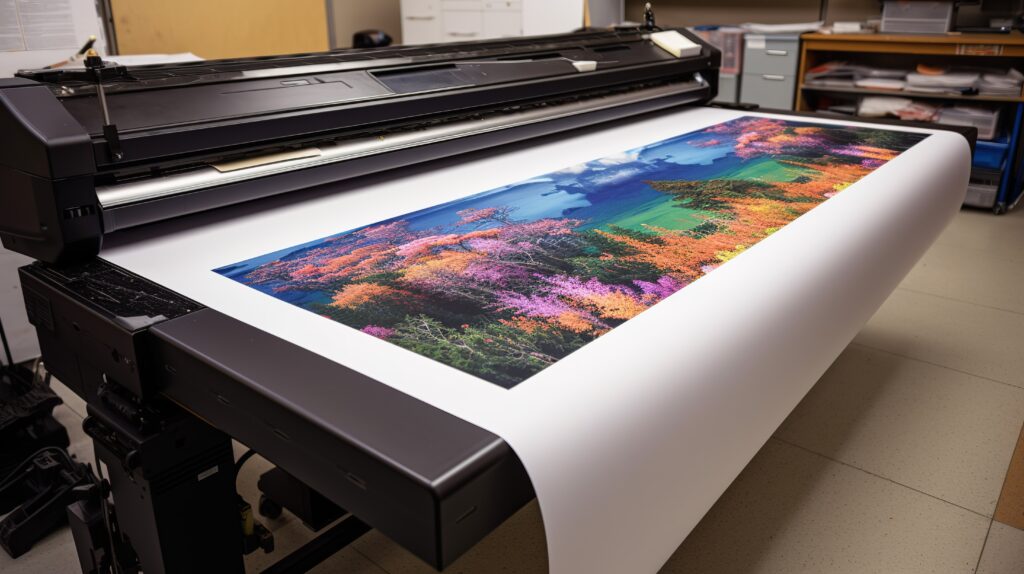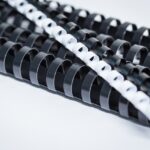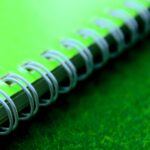Tag: printing business guide
Printing 101: Tips for Successful Vinyl Printing
Vinyl printing has become a versatile and popular method for creating custom designs on various surfaces, from banners and signs to car decals and home decor. Known for its durability, vibrant colours, and adaptability, vinyl printing caters to businesses, event organizers, and individuals seeking creative ways to express themselves or promote their brand. However, achieving professional results requires knowledge, preparation, and tools. This article provides essential tips for mastering vinyl printing, including choosing the right materials, preparing designs, using the right equipment, and ensuring long-lasting results.
What Is Vinyl Printing?
Vinyl printing involves transferring designs onto vinyl material using specialized printers and techniques. This method is commonly used to create vibrant, durable graphics for various applications, including stickers, decals, banners, signs, and apparel. Depending on the desired outcome, the vinyl material is either printed with eco-solvent or UV inks or cut into shapes using cutting machines. Known for its weather resistance and versatility, vinyl printing is popular for both indoor and outdoor uses, offering high-quality, long-lasting results.
Tips to Achieve Quality Vinyl Printing
1. Choose the Right Type of Vinyl
Selecting the right type of vinyl is crucial for the success of your project. Different types of vinyl are suited for various applications:
- Adhesive Vinyl: Best for stickers, decals, and outdoor signage. Available in permanent and removable options, adhesive vinyl works well on smooth surfaces such as glass, plastic, and metal.
- Heat Transfer Vinyl (HTV): Ideal for fabrics and textiles. HTV is applied using heat and pressure, making it perfect for custom T-shirts, hats, and bags.
- Cast vs. Calendered Vinyl: Cast vinyl is thinner, more durable, and suited for long-term outdoor use, such as vehicle wraps. Calendered vinyl is thicker and better for short- to medium-term indoor projects.
2. Use High-Quality Design Software
Creating a high-resolution design is the foundation of great vinyl printing. Use professional graphic design software like Adobe Illustrator, CorelDRAW, or Silhouette Studio to ensure crisp, detailed designs. Always save your design in a vector format (e.g., SVG, AI, or EPS) to maintain quality during scaling.
When designing:
- Clean, bold designs work best, especially for small-scale prints like stickers or decals.
- Ensure the design colours contrast well with the background to make it stand out.
- Use grids and guides to align text and images properly.
3. Calibrate Your Printer
Proper calibration of your printer is essential to ensure colour accuracy and print quality. Use a test print to check for alignment, resolution, and colour consistency before starting a large batch.
Eco-Solvent or UV Printers are the best for vinyl printing as they provide waterproof, fade-resistant prints with vibrant colours. Make sure to use the correct resolution, drying time, and ink density based on the type of vinyl you’re using.
4. Prepare the Vinyl Properly
Before printing, ensure the vinyl is clean, dust-free, and flat to avoid imperfections in the final output. Any dirt or creases on the vinyl can affect the adhesion and quality of the print. Trim the material to fit your printer or cutting machine to avoid waste. Before committing to a large print, run a small test print to confirm the quality and ensure the ink adheres properly.
5. Invest in a Quality Cutting Machine
A cutting machine is essential for precision when working with vinyl. Tools like Cricut, Silhouette, or professional-grade cutting plotters ensure clean, accurate cuts for intricate designs.
Note: Make sure to adjust the blade depth, speed, and pressure based on the thickness of your vinyl. After cutting, use weeding tools to remove unwanted vinyl pieces from the design for a polished look.
6. Ensure Proper Application
Applying vinyl to the intended surface correctly is just as important as the printing process itself.
- Remove dirt, dust, and grease from the application area to ensure the vinyl adheres well.
- For decals and intricate designs, transfer tape helps align and place the vinyl accurately on the surface.
- Use a squeegee or application tool to smooth out the vinyl, eliminating air bubbles and ensuring strong adhesion.
7. Use Protective Coatings
For outdoor applications, consider using a laminate or clear coat to protect the vinyl from UV rays, scratches, and weather damage. Laminating your vinyl print not only increases its lifespan but also enhances its appearance with a glossy or matte finish.
8. Avoid These Common Mistakes
Vinyl printing can be challenging, especially for beginners. Here are some common pitfalls to avoid:
- Using the Wrong Vinyl Type – Make sure the vinyl matches the intended surface and purpose (e.g., don’t use HTV on a hard surface).
- Skipping Test Prints – Always print a sample before starting a large project to catch any issues early.
- Ignoring Temperature Settings – If using HTV, set the correct temperature and pressure on your heat press to avoid damaging the vinyl or fabric.
9. Maintain Your Equipment
Regular maintenance of your printer and cutting machine ensures consistent quality and prevents breakdowns. Clean Your Printer Heads since residue buildup can affect print quality; clean the heads regularly. Dull cutting blades can result in uneven cuts, so replace them as needed. Keep your vinyl in a cool, dry place to prevent warping or adhesive degradation.
10. Experiment and Learn
Don’t be afraid to experiment with different techniques, materials, and finishes to find what works best for your projects. Vinyl printing is a skill that improves with practice, and staying up to date with industry trends and innovations will help you stay ahead.
Final Products Through Vinyl Printing
Vinyl printing produces a wide range of custom products tailored to specific needs. Some of the common final products include:
- Car decals
- Promotional stickers
- Wall graphics
- Window displays
- Event signage.
It also creates heat-transfer vinyl (HTV) designs for apparel such as T-shirts, hats, and bags. Businesses use vinyl-printed materials for branding and advertising, while individuals enjoy using them for home decor and personal projects. These products are valued for their durability, vibrant colours, and adaptability to various surfaces and applications.
Vinyl printing offers endless possibilities for creative and commercial projects, from custom stickers and decals to promotional banners and apparel. By following these tips—choosing the right materials, ensuring accurate design and print settings, and mastering the application process—you can achieve professional-quality results every time. With practice, patience, and the right tools, vinyl printing can become a rewarding and profitable venture for both beginners and seasoned creators.
If you’re envisioning a successful venture in the world of vinyl printing, look no further. PRINTFINISH is here to support your journey every step of the way. Let’s turn your vinyl printing business into a thriving reality. Contact us today to explore the endless possibilities that vinyl printing can offer your enterprise.





























